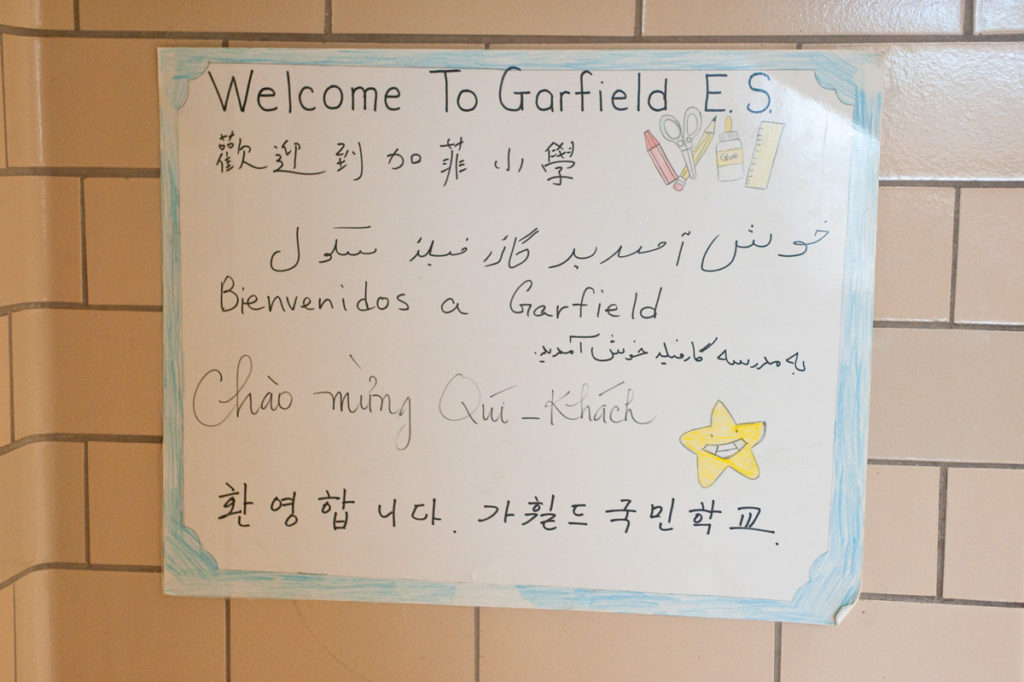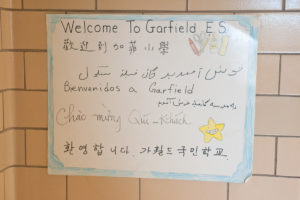
 Question:
Question:I know that it’s important to have a good working relationship with the parents and care-takers of the children in my classroom. The children come from diverse backgrounds, with differences in ethnicity, religion, socio-economic status, and family structure. What can I do to reach out to families in a way that’s welcoming and respectful of all?
In the Responsive Classroom approach we believe that it’s as important to know the families of the children we teach as it is to know the children.
But in schools with a diverse population, there are special challenges in reaching out to parents. Many parents may work long or irregular hours; some may have limited English skills. Depending on their past experiences with education, school might seem like an intimidating place; teachers and administrators might be viewed as authority figures whose opinions and practices should not be challenged or questioned.
All of this may prevent families from taking an active role. Here are some ideas for reaching out to parents:
Cultural differences as they relate to learning style
Cultural views regarding education, family, and authority
Cultural values relating to time, respect, community, and male/female roles
Speak slowly, enunciate clearly, and limit the use of complex words or slang
Offer clarification and ask for confirmation of understanding
Use contextual clues such as props, gestures, visuals, etc.
Melissa Correa-Connolly is a Northeast Foundation for Children (NEFC) staff member who works as a Responsive Classroom presenter and consultant to schools. Before joining the NEFC staff she was an academic counselor at Academy Middle School in Fitchburg, MA, and has taught bilingual education and special education classes for grades 3–5.
At the beginning of the year, I want to learn about the families of the children in my class: their cultures, interests, values, struggles, and celebrations. I send each child’s family a letter in which I introduce myself. I enclose a questionnaire that I ask families to complete and bring to our goal setting conference, which happens before school opens.
Through the questionnaire and conference, I begin to learn who is in a child’s extended family, what the child is interested in and good at, and what sort of special needs the child might have. I also learn about the family culture and history. As I review the questionnaires, I find places where I can articulate personal connections that help me build rapport with families.
I then look for ways throughout the year to strengthen my relationships with families. One such opportunity comes in January and February when we celebrate a “Special Day” for each child. Families choose a date that fits their schedules so that they may participate in their child’s Special Day. Extended family as well as anyone else who is special in that child’s life are invited to attend and participate.
The night before a child’s Special Day I send home the “magic suitcase” that families can fill with items depicting their cultures and interests. Each Special Day celebration begins with family members and the child sharing the contents of the suitcase with the class, focusing on what makes their family special. Family members are also encouraged to facilitate an activity, which have included teaching cultural dances or songs, playing musical instruments, teaching sign language, and making puppets and presenting puppet shows.
I have found that when I listen carefully, recognize unique struggles and strengths, and respond to a variety of situations with empathy, enthusiasm, or support, families from all cultures and backgrounds feel welcomed and respected.
Shiala Higgs has taught multiage K/1 classes at the Regional Multicultural Magnet School in New London, CT, for the last ten years. She received her BS and MS degrees in education from FL International University in Miami and taught in south FL for eleven years before moving to CT.
Right from the beginning, I make myself available to parents. I let families know that I’ll be in the classroom the week before school, getting things set up for the year. They’re welcome to stop by with their child, meet me, and get a tour of the room and an introduction to routines and materials. This gives me an informal, relaxed way to begin getting to know families.
I’ve worked with the ESL teacher to make this informal orientation accessible to second language learners. For example, we put together a glossary/pictionary of important words and phrases that families can take home with them.
After school begins, the school holds a back-to-school night. This gives me another opportunity to talk informally with parents. I try to make this a fun event. Early in the evening, families tour the school. During this time, I have a looping slide show running that shows each child in the class engaged in an activity.
Then when we all meet together I use a PowerPoint slide presentation to talk about classroom events, the daily schedule, etc. The parents get to see pictures of their children engaged in the daily life of the classroom and the visual images help second language learners understand the information.
Finally, our school offers a yearly in-service presentation led by ESL staff during which we learn about and discuss issues such as differing ideas about gender roles or attitudes towards education. This helps me think about how to reach out to families from different cultures in the most effective way.
Rick Ellis has been an early childhood/elementary school educator for over 30 years. He currently teaches kindergarten at the Dutch Neck School in West Windsor, NJ.
Bywood Elementary School has a diverse, multi-national population. One of the things we’ve learned over the years is that making thoughtful contact with families early in the year provides a basis for ongoing good communication. There are several things that individual teachers can do:
Find opportunities early in the year to meet and talk with parents. Orientation nights provide a perfect opportunity for initial and casual contact. One teacher I know makes home visits in the beginning of each year. She makes sure to schedule a time that is convenient for family members and has had wonderful responses to her visits.
Learn and practice the correct pronunciation of all names. Making the effort to pronounce names correctly is one way to show caring and respect.
Think about how you’ll accommodate non-English speaking parents. At Bywood School, family or community members often serve as interpreters. But if parents don’t have access to this kind of support system, our school staff helps connect them to community members and local agencies who can help with translation.
Lisa Kostaneski is the lead teacher at Bywood Elementary School in Upper Darby, PA, where she has also taught 4th and 5th grades. She is a Responsive Classroom certified consulting teacher.